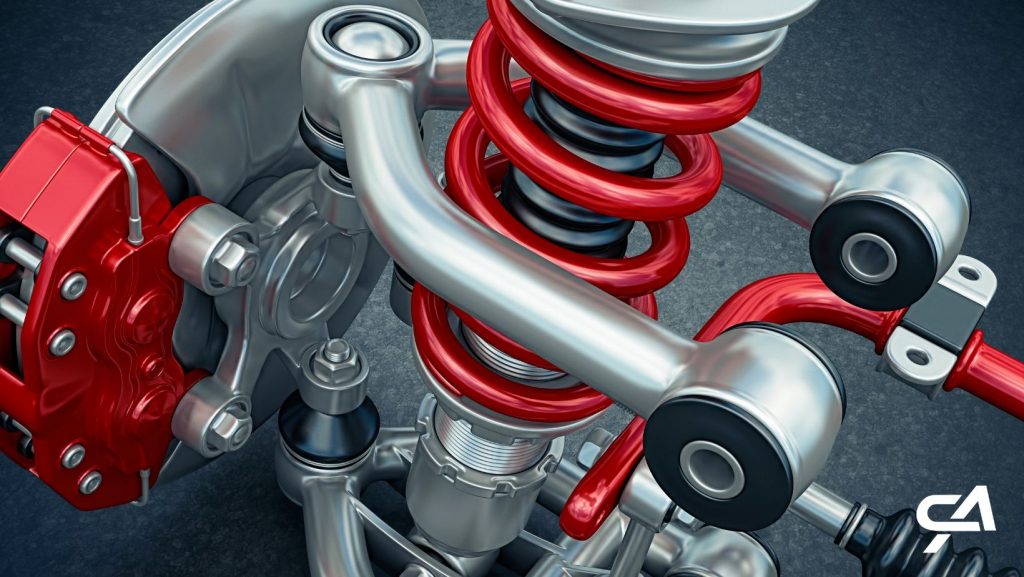Riding on Clouds: A Comprehensive Guide to Suspension Systems
Beneath the sleek exterior of your vehicle lies a sophisticated system that plays a pivotal role in providing a smooth and controlled ride—the suspension system. The suspension system is a critical component that requires attention and maintenance. Suspension system service allows your vehicle to absorb shocks, maintain tire contact with the road, and enhance overall vehicle stability. In this blog, we will unravel the intricacies of suspension systems, exploring what they encompass and why they are indispensable for a comfortable and safe driving experience.
Suspension System Unveiled: The Foundation of Comfort and Control
The suspension system is a complex network of components that work together to manage the impact of road irregularities on your vehicle. Its primary functions include absorbing shocks, maintaining tire contact with the road, and providing stability during acceleration, braking, and cornering.
Components of the Suspension System: Building Blocks of Comfort
Springs:
Springs are fundamental components that support the vehicle’s weight and absorb shocks from the road. Common types include coil springs and leaf springs, each offering specific advantages regarding ride comfort and load-carrying capacity.
Shock Absorbers (Dampers):
Shock absorbers, often called dampers, work with springs to control the oscillations generated by road irregularities. They ensure the vehicle’s suspension returns to its normal position after being compressed or extended.
Struts:
Struts combine the functions of a spring and shock absorber into a single unit. They provide structural support for the suspension and are commonly found in the front suspension of many vehicles.
Control Arms:
Control arms connect the vehicle’s frame to the wheel assembly, allowing for controlled movement and maintaining the proper alignment of the wheels.
Sway Bars (Stabilizer Bars):
Sway bars link the left and right wheels, reducing body roll during cornering, which enhances stability and control, particularly in high-speed maneuvers.
Bushings:
Bushings are rubber or polyurethane components that isolate vibrations and reduce friction between moving parts, enhancing ride comfort and prolonging the life of suspension components.
Torsion Bars:
Torsion bars are spring-like components that twist to provide resistance and support. They are less common in modern vehicles but still in specific suspension designs.
Types of Suspension Systems: Tailoring the Ride to Your Needs
Independent Suspension:
Each wheel operates independently, allowing for better isolation of road shocks and improved handling. Common types include MacPherson strut and double-wishbone designs.
Dependent (Solid Axle) Suspension:
Both wheels on an axle are linked, meaning the movement of one wheel affects the other. This design is often used in rear-wheel-drive trucks and some off-road vehicles.
Air Suspension:
Air suspension replaces traditional springs with airbags, offering adjustable ride height and improved comfort. It is commonly found in luxury vehicles and certain SUVs.
Suspension System Dynamics: Responding to Changing Conditions
The suspension system dynamically adjusts to various driving conditions, ensuring a balanced and controlled ride. When encountering bumps or potholes, the system compresses and rebounds, absorbing shocks and minimizing the transfer of vibrations to the vehicle’s occupants.
Importance of Suspension System Maintenance: Preserving Comfort and Safety
Ride Comfort:
A well-maintained suspension system contributes to a smoother and more comfortable ride by effectively absorbing road shocks and vibrations.
Handling and Stability:
Properly functioning suspension enhances vehicle stability, especially during turns and maneuvers, contributing to precise handling and a safer driving experience.
Tire Wear:
Suspension components ensure even tire wear. Misaligned or worn-out suspension parts can lead to irregular tire wear and affect overall performance.
Braking Efficiency:
A stable and responsive suspension system ensures optimal weight distribution during braking, contributing to efficient and controlled stopping.
Alignment Integrity:
The suspension system plays a crucial role in maintaining proper wheel alignment. Misaligned wheels can lead to uneven tire wear and compromise handling.
Signs of Suspension System Issues: Recognizing Red Flags
Regular monitoring of your vehicle can help identify potential suspension issues. Signs such as excessive bouncing, uneven tire wear, clunking or knocking noises, or a tilted vehicle stance should prompt immediate attention to the suspension system.
Suspension System Maintenance: A Proactive Approach to Vehicle Care
Regular Inspections:
Routine inspections by qualified technicians help identify and address potential issues before they escalate. Inspections include checking for leaks, inspecting components for wear, and ensuring proper alignment.
Shock Absorber Replacement:
Shock absorbers have a finite lifespan and require replacement when reduced damping effectiveness or fluid leaks become apparent.
Spring Inspection and Replacement:
Technicians will inspect springs for sagging, cracking, or signs of wear. Damaged or worn springs require replacement to maintain proper support and ride height.
Alignment Checks:
Regular wheel alignment checks help ensure that the suspension system supports even weight distribution, preventing issues such as uneven tire wear and handling problems.
Bushing Lubrication and Replacement:
Lubricating or replacing worn bushings is crucial for minimizing friction, reducing vibrations, and preserving the longevity of suspension components.
Upgrading Suspension Systems: Customizing for Performance and Comfort
Enthusiasts and those seeking enhanced performance or specific ride characteristics may opt for aftermarket suspension upgrades. These can include adjustable shocks, upgraded springs, or complete suspension kits tailored to specific driving preferences.
Manufacturer Recommendations: Following Service Intervals
Manufacturers provide guidelines for suspension system service intervals. Adhering to these recommendations ensures that the suspension system receives timely attention, preventing issues and preserving the vehicle’s overall health.
Conclusion:
The suspension system is dynamic and integral to your vehicle, influencing ride comfort, handling, and overall safety. Regular maintenance, timely inspections, and promptly addressing issues are essential to ensuring that your suspension system operates at its best. As the foundation for a smooth and controlled ride, a well-maintained suspension system contributes to your vehicle’s longevity. It enhances your driving experience, allowing you to navigate the road with confidence and comfort.

